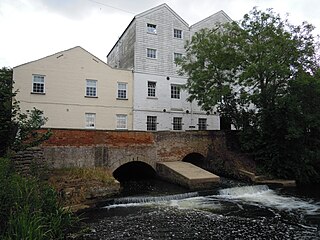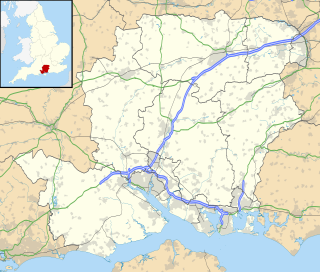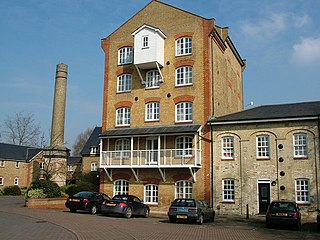 W
WBuxton Mill, is located on the River Bure about 0.5 miles (0.80 km) east of the village of Buxton, Norfolk, and is in the hamlet of Lamas, Norfolk. A watermill was recorded here in the Domesday Book. The present mill is thought to date from 1754 and was built by William Pepper, a merchant living in Buxton.
 W
WDunster Working Watermill is a restored 18th century watermill, situated on the River Avill, close to Gallox Bridge, in the grounds of Dunster Castle in Dunster, Somerset, England. It is a Grade II* listed building.
 W
WThe East Malling Stream, known locally as "The Stream", rises at Well Street, East Malling, Kent, and flows in a generally easterly direction to join the River Medway at Mill Hall, Aylesford. It powered six watermills. The stream may have formerly been known as the Bradbourne, Bradbourne Lane in Ditton bearing witness to this name.
 W
WHeadley Water Mill is a water mill used for the milling of flour and situated near the village of Headley on the outskirts of the village of Lindford in the east of the English county of Hampshire. It is likely that there was a mill on this site in 1086 at the time of the Domesday Book. The west end of the current mill is considered to date from the 16th Century, whilst the central section is older. The mill is powered by the south branch of upper reaches of the River Wey and is the last commercially productive water mill in Hampshire. The mill with its adjoining house is a Grade II listed building.
 W
WMill Green Museum is a working watermill in Hatfield, Hertfordshire, England. The building is listed grade II* and dates from the 17th century. The mill uses the power of the River Lea, and the site has been used for milling since the Domesday Book.
 W
WOtterton Water Mill is at the village of Otterton, near Budleigh Salterton in Devon, England.
 W
WThe River Len is a river in Kent, England. It rises at a spring in Bluebell Woods to the southeast of the village centre of Lenham 0.6 miles (0.97 km) from the source of the River Great Stour; both rise on the Greensand Ridge. Its length is c10 miles (16 km). It enters the River Medway at Maidstone.
 W
WSele Mill is a 19th-century mill building in Hertford, England. It has been converted into apartments.
 W
WStoke Mill is a 19th century corn mill on the River Wey that has been converted into offices. It is situated off the Woking Road just north of Guildford town centre. It forms the centrepiece of a small group of buildings that includes the Grade II listed Stoke Mill House.
 W
WThe Wateringbury stream is a tributary of the River Medway in Kent, England. It rises at Swanton, West Peckham parish, flows south east towards Mereworth and then flows in a generally easterly direction to join the River Medway at Wateringbury. It is some four miles (6 km) long and powered a number of watermills.
 W
WThe Winchester City Mill is a restored water mill situated on the River Itchen in the centre of the ancient English city of Winchester. The mill is owned by the National Trust and is a Grade II* listed building.